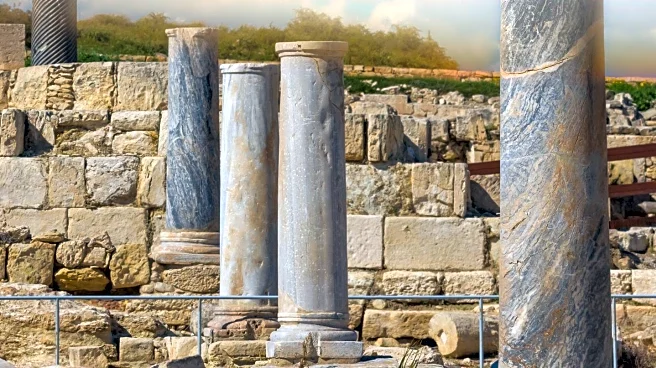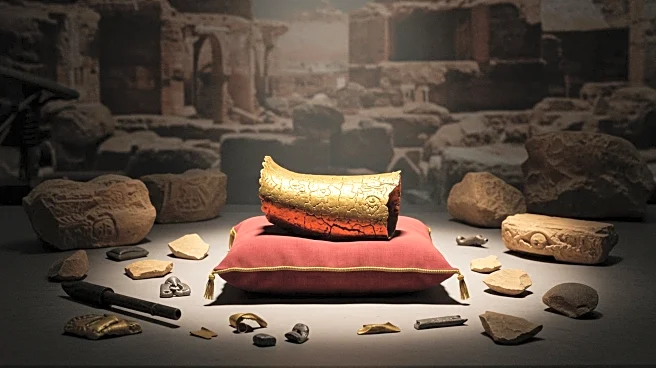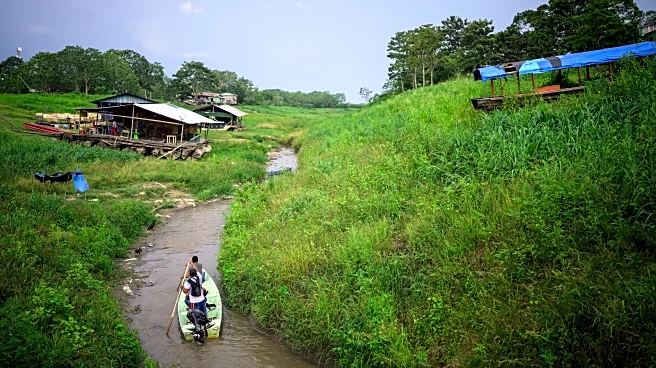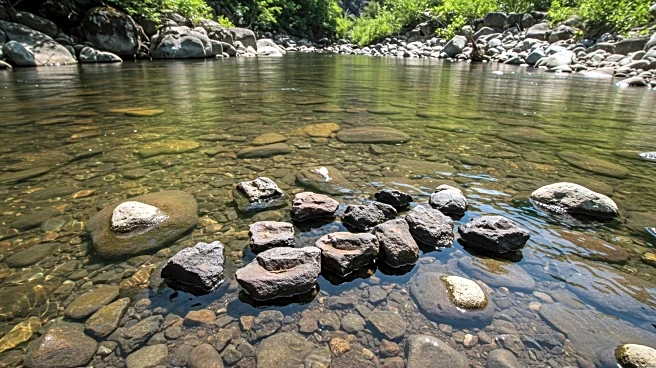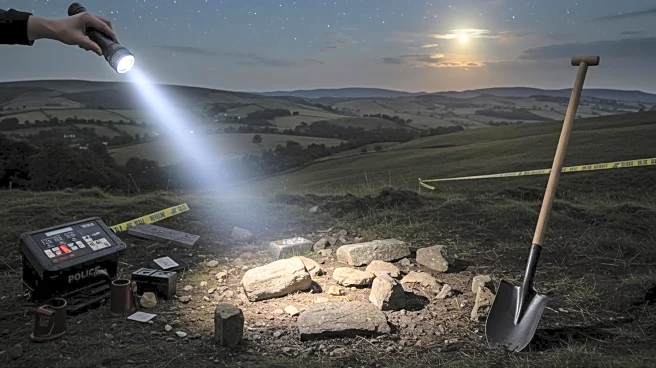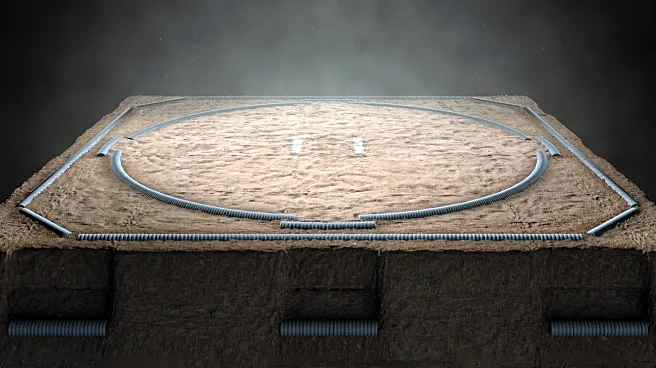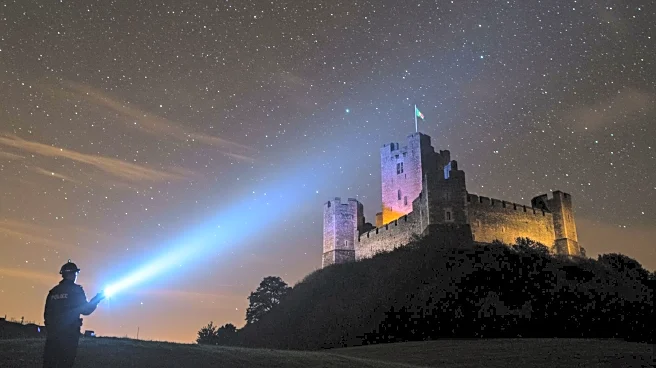What's Happening?
Archaeologists have uncovered the ruins of an ancient temple complex in Bolivia, believed to belong to the Tiwanaku society, which vanished around AD 1000. The discovery was made in Caracollo, southeast of Lake Titicaca, a region previously unexplored for Tiwanaku artifacts. The temple, named Palaspata, features architectural elements typical of Tiwanaku style, such as a terraced platform and sunken courtyard. This site is strategically located along historical trade routes, suggesting its role in expanding Tiwanaku's influence. The temple's discovery provides new insights into the interconnectivity and sociopolitical strategies of the Tiwanaku empire.
Why It's Important?
The discovery of the Palaspata temple is significant as it sheds light on the Tiwanaku society's expansion and influence in the Andean region. This find helps researchers understand the complex social, political, and economic structures of Tiwanaku, which developed independently as a primary state formation. The temple's location suggests it was a strategic outpost for controlling trade and exerting religious influence. Understanding Tiwanaku's societal dynamics offers valuable insights into pre-Inca civilizations and their contributions to regional development, potentially influencing modern interpretations of ancient Andean cultures.
What's Next?
Further archaeological investigations are expected to continue at the Palaspata site to uncover more details about the Tiwanaku society. Researchers may focus on exploring the temple's role in religious and social gatherings, as indicated by the presence of keru cups used for drinking chicha. The study of Tiwanaku's collapse due to environmental factors or social unrest may also be revisited, providing a deeper understanding of the challenges faced by ancient societies. These efforts could lead to a more comprehensive understanding of Tiwanaku's legacy and its impact on subsequent Andean civilizations.
Beyond the Headlines
The discovery of the Palaspata temple challenges previous assumptions about the Tiwanaku society's geographic reach and societal complexity. It highlights the importance of revisiting historical narratives that may have overlooked non-traditional state formations. The alignment of religious, political, and economic institutions in Tiwanaku society offers a unique perspective on how ancient civilizations managed power and influence. This find encourages a reevaluation of archaeological methodologies and the criteria used to define ancient states, potentially influencing future research in the field.


